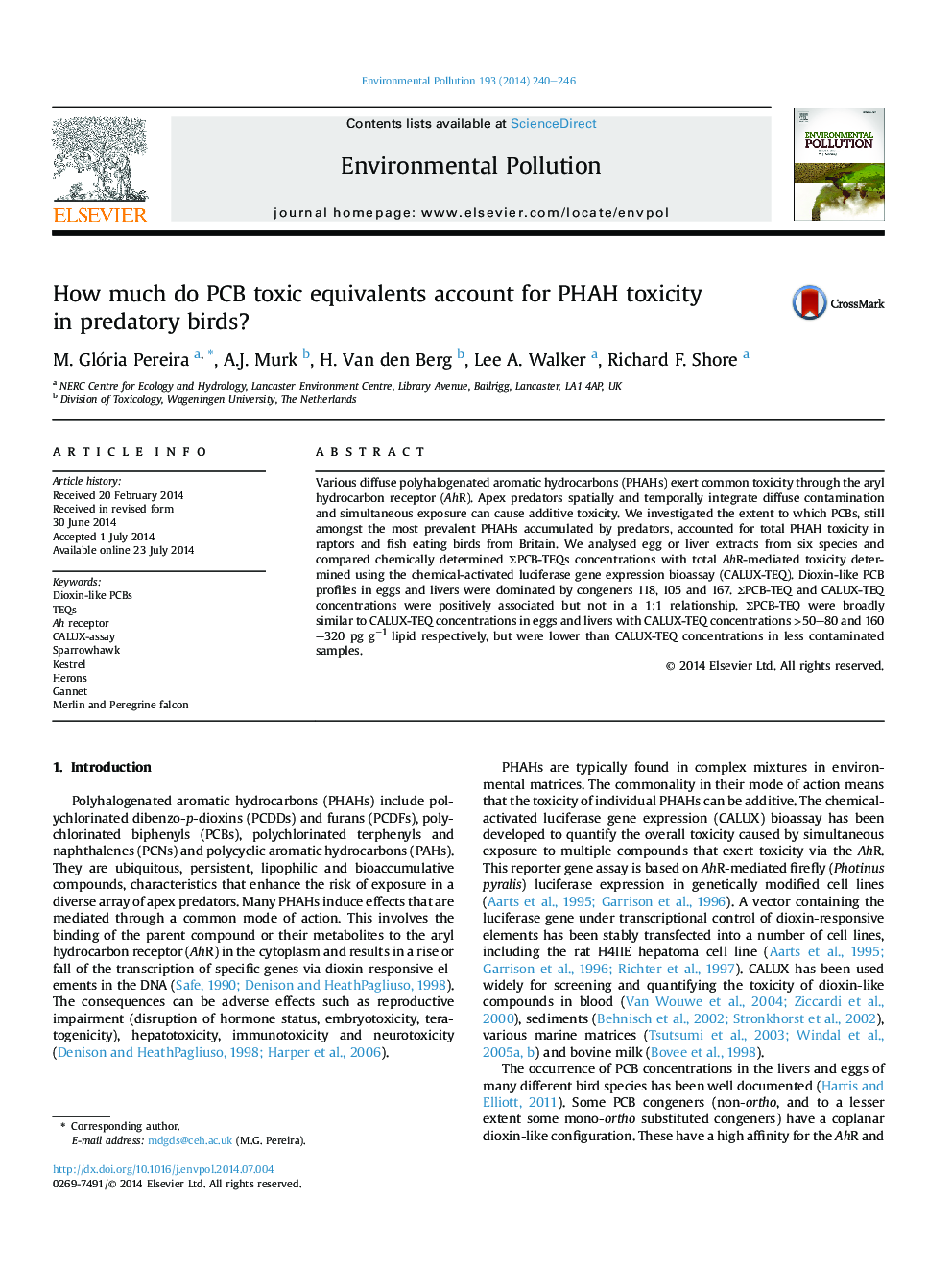| Article ID | Journal | Published Year | Pages | File Type |
|---|---|---|---|---|
| 6318142 | Environmental Pollution | 2014 | 7 Pages |
Abstract
Various diffuse polyhalogenated aromatic hydrocarbons (PHAHs) exert common toxicity through the aryl hydrocarbon receptor (AhR). Apex predators spatially and temporally integrate diffuse contamination and simultaneous exposure can cause additive toxicity. We investigated the extent to which PCBs, still amongst the most prevalent PHAHs accumulated by predators, accounted for total PHAH toxicity in raptors and fish eating birds from Britain. We analysed egg or liver extracts from six species and compared chemically determined ΣPCB-TEQs concentrations with total AhR-mediated toxicity determined using the chemical-activated luciferase gene expression bioassay (CALUX-TEQ). Dioxin-like PCB profiles in eggs and livers were dominated by congeners 118, 105 and 167. ΣPCB-TEQ and CALUX-TEQ concentrations were positively associated but not in a 1:1 relationship. ΣPCB-TEQ were broadly similar to CALUX-TEQ concentrations in eggs and livers with CALUX-TEQ concentrations >50-80 and 160-320 pg gâ1 lipid respectively, but were lower than CALUX-TEQ concentrations in less contaminated samples.
Related Topics
Life Sciences
Environmental Science
Environmental Chemistry
Authors
M. Glória Pereira, A.J. Murk, H. Van den Berg, Lee A. Walker, Richard F. Shore,
